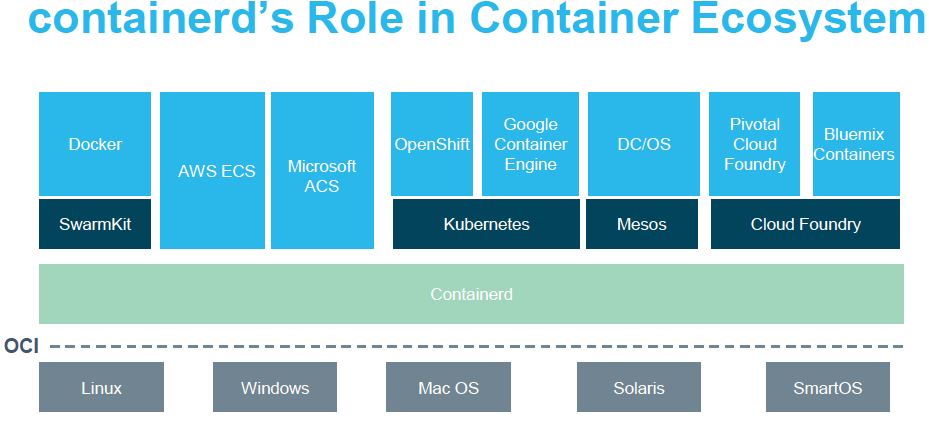Docker Donates Container ‘Plumbing’

via Shutterstock
Docker Inc. is moving to expand its application container ecosystem by releasing to the open source community its underlying runtime used to execute containers while enlisting leading public cloud providers as partners to extend the reach of distributed applications in enterprise infrastructure.
The San Francisco-based company said Wednesday (Dec. 14) it is spinning out the core component of Docker Engine, dubbed "containerd" (Con-tay-ner-D) and donating it to a new industry project. The container component includes methods for transferring container images, container execution and supervision, local storage and network interfaces running on Linux and Windows.
Cloud partners for the container runtime open source project include China's Alibaba Cloud (NYSE: BABA), Amazon Web Services (NASDAQ: AMZN), Google Cloud Platform (NASDAQ: GOOGL), IBM (NYSE: IBM) and Microsoft Azure (NASDAQ: MSFT).
The move reflects how application containers are making their way into hybrid and other cloud rollouts, the partners said. It also targets "upstream" development of container technologies as a growing number of providers seek to differentiate their offerings. Docker also hopes the move will appeal to cloud providers reluctant to go with off-the-shelf platforms as they handle more custom workloads and other use cases.
As cloud rollouts accelerate, Docker further stressed the need for "multi-cloud portability" for container infrastructure as enterprises seek to avoid cloud vendor lock-in. Hence, it argues that application development must remain independent of cloud vendors as the pace of distributed application deployment quickens.
The runtime component provides an "independent layer" on which to build applications, Solomon Hykes, Docker founder, CTO and chief product officer, noted in an interview. "It's really a layered cake."

(Source: Docker)
The company added in a statement that the containerd project builds on earlier open source "plumbing" projects, some of which were donated to standards groups such as the Open Container Initiative (OCI). Hence, Hykes said, Docker is embracing an open source strategy akin to the Linux kernel where the runtime can find a home and developers can "exercise creative control."
The "modularizing" of Docker Engine also acknowledges that innovation is slowing at the lower layers of the container ecosystem. Docker is "shifting focus higher in the stack to maintain that independent layer," Hykes explained.
As such, containerd will mesh with the OCI container runtime, image format specifications along with the group's reference implementation. Docker said developers could contribute to the project here, while public cloud and other third-party "maintainers" oversee the effort. Docker said it would use the current OCI standard and comply with the group's 1.0 standard scheduled for release by mid-2017.
The hope is that standard container "plumbing" will ensure that distributed applications are stable running across micro-services and other enterprise infrastructure.
A "stable container runtime is critical for our customers," noted Deepak Singh, general manager of Amazon EC2 Container Service at AWS. The release "will empower Linux and Windows developers alike with a common foundation for container runtimes,” added John Gossman, lead architect on Microsoft Azure.
The Docker runtime is widely used in production as part of the company's container platform, Docker Engine. The company said this week it has committed to donating containerd to "neutral, open foundation" during the first quarter of 2017.
Related
George Leopold has written about science and technology for more than 30 years, focusing on electronics and aerospace technology. He previously served as executive editor of Electronic Engineering Times. Leopold is the author of "Calculated Risk: The Supersonic Life and Times of Gus Grissom" (Purdue University Press, 2016).











